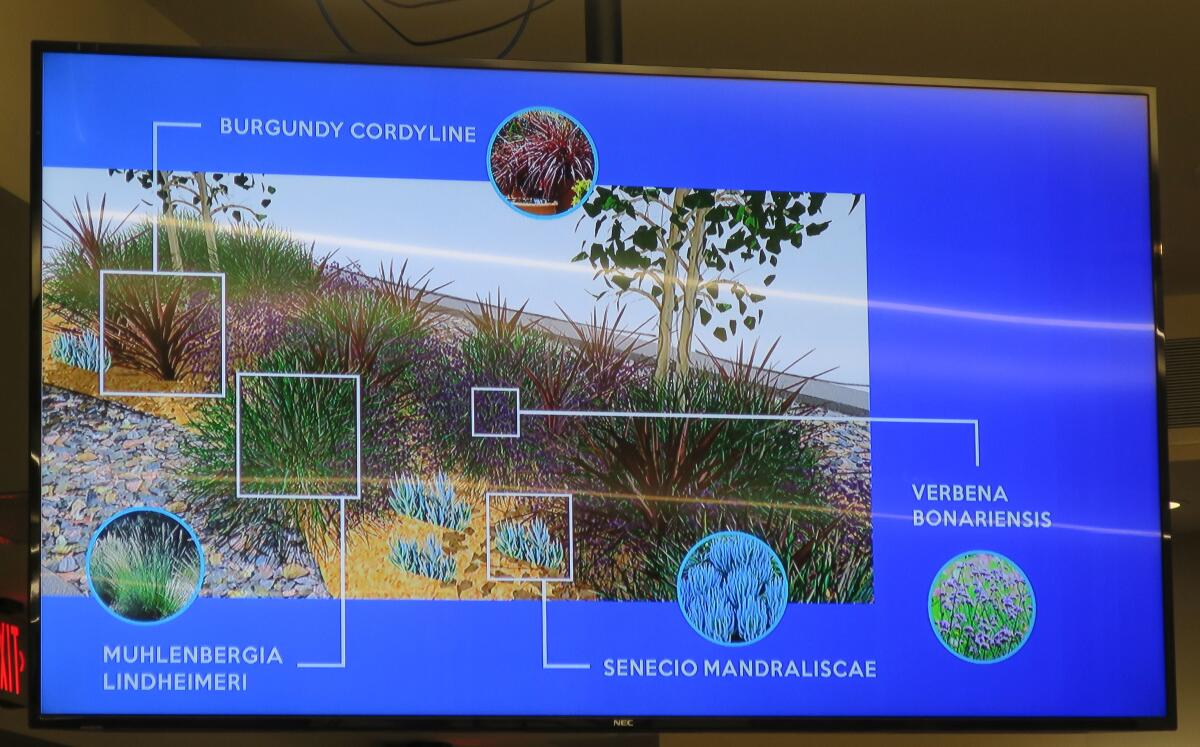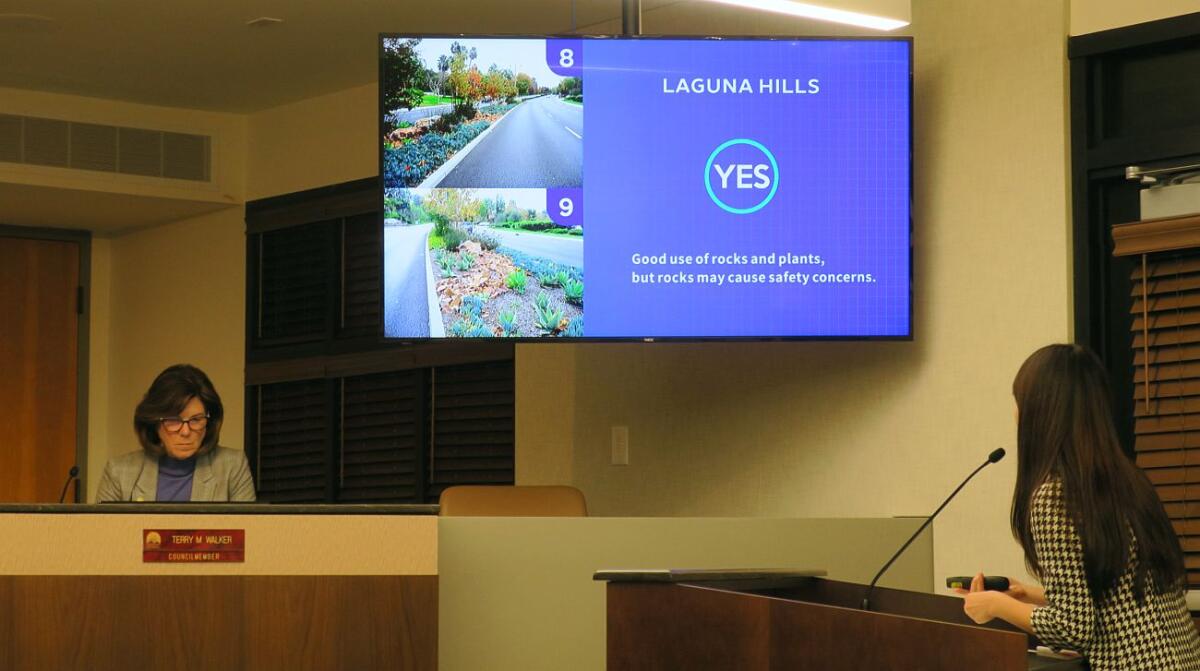Hope for drought-singed Foothill Boulevard medians could be on the horizon

After years of bearing unsightly, singed landscapes in the medians on Foothill Boulevard, La Cañada city officials have finally been given a reprieve, after a group of USC graduate students agreed to redesign the spaces as a capstone project.
City Manager Mark Alexander said he was contacted this summer by Frank Zerunyan, a professor of USC’s Sol Price School of Public Policy, about a group of students looking to partner with a municipality on a project designed to evaluate an infrastructure issue or policy.
State water conservation laws placing restrictions on how and where cities could use water has taken a toll on La Cañada’s grass-forward medians. City officials entered an agreement with the city of Glendale in 2015 to purchase and truck in recycled water.

One round of irrigation used some 7,000 gallons at the rate of $2.47 for 100 cubic feet — or about $24 per watering — according to Public Works figures. But still, the medians suffered.
An ad-hoc beautification subcommittee, including council members Terry Walker and Jon Curtis, was authorized to consider options, but it wasn’t until the USC students got involved that things got moving.
Graduate students of the program shared their final recommendations with council members Tuesday in a presentation.
Rebecca Lin, a student from Taiwan seeking her master’s in International Public Policy and Management, explained the objective was to find designs that were attractive, drought tolerant, sustainable and unique to La Cañada.
“We want to make sure residents like the medians. We want to have medians with more efficient water use. [And] we want the medians to represent the city so when people drive into the city, they know they’re entering La Cañada Flintridge,” Lin said.
Students used a USC climate map to determine which plant species would work well, given La Cañada’s temperature and rainfall, and talked with city officials about what plants and trees would work best for the city. Palm trees and messy jacarandas, for example, were out.
They decided not to uproot existing median trees and developed a palette of species that were drought-tolerant and compatible. Varieties of agave, aloe and verbena, among others, were identified.
“These plants are also suitable for the climate conditions,” USC grad student Adylbek Abdykalikov, from Kazakhstan, told council members.
One suggestion was to apply students’ recommendations to the landscaping portion of the city’s grant-funded Foothill Boulevard Link Bikeway and Pedestrian Greenbelt project, from Leata Lane to Hillard Avenue, as a pilot project. If it worked out, the design could be extended to other medians.
Public Works Director Pat DeChellis said it depended on whether the design fit into the consultant-created landscaping plan and the overall timeline of the Link project, currently estimated to be completed in summer 2021.
Walker thanked the students and said she’d take their suggestions to the subcommittee so she and Curtis could share them with landscape architects and other local experts.
“This is an excellent step to get the ball rolling, but I do think we want to involve the community,” she said. “This is a big decision … so I want to make sure we’re going in the right direction and we do have the input of our landscape architects.”
Also Tuesday, council members:
• heard an update from Public Works Director Pat DeChellis on the progress of two sound walls previously approved for the Foothill (210) Freeway above Hampton Road, which has been on the minds of several residents concerned with ongoing traffic noise. DeChellis released a request for engineering proposals in August but received no responses, so is speaking directly with firms. He estimated the engineering and design process could take 12 to 14 months, with construction not likely to begin before 2022.
• canceled a presentation from Southern California Edison on the utility’s progress in responding to recommendations made by a city-hired consultant in 2017 regarding needed infrastructure improvements. City Manager Mark Alexander explained the representative scheduled to speak had a family medical emergency and could not appear. He said it was unclear when the matter might be rescheduled, as Edison has had to deal with other intervening issues in the past year that may have lowered the priority of the city’s requests.
